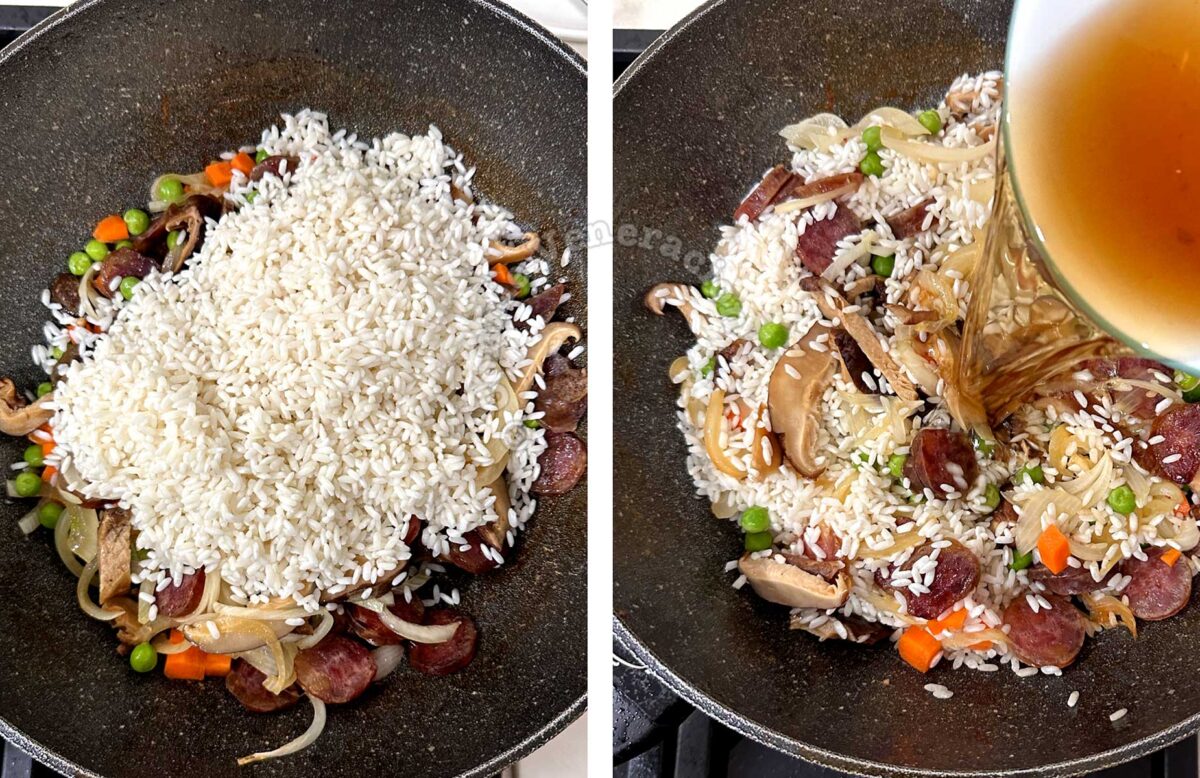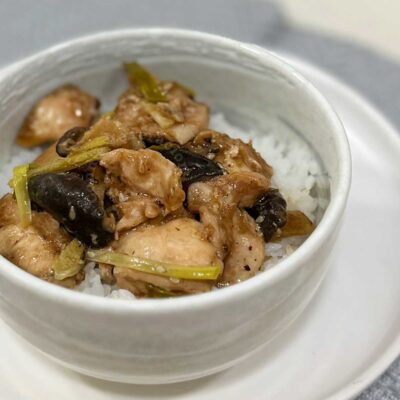But what’s the difference between lo mai gai and zongzi?
They are the names of a Chinese sticky rice dumpling filled with chicken (or pork), Chinese sausage, salted duck egg, black mushrooms, peanuts or chestnuts, or both, wrapped in leaf then steamed or boiled.
Lo mai gai is wrapped in lotus leaf and shaped as a rectangle. Zongzi is wrapped in bamboo or reed leaves and shaped like a pyramid or a cone.
Is machang adapted from lo mai gai or from zongzi?
Both lo mai gai and zongzi are sold as machang in the Philippines. That’s why they are sometimes rectangular and, at other times, triangular. That is also why the consistency and color of the sticky rice, and the flavors, vary so much.
How lo mai gai became machang is a mystery to me but I’m guessing that whoever introduced the dish in the Philippines came from either of two towns named Machang in China (one is a town of Qing County in eastern Hebei province while the other is a town of Quanjiao County in eastern Anhui province.
Or, a Filipino first experienced the leaf-wrapped sticky dish in Machang, China, (or, maybe, in the Machang area of Kelantan, Malaysia), did not know what it was called or couldn’t pronounce its name, replicated the dish in the Philippines and decided to simply call it machang.
I wish I knew the correct answer. As that wicked lawyer, Manfred Powell (played by Iain Glen), said in 2003’s Lara Croft: Tomb Raider, “My ignorance amuses me.” Ha!
No leaf wrapper sticky rice with pork, sausage and mushrooms
We love machang so very, very much here at home. But we live in the boondocks and machang isn’t sold here. We wait until some errand requires a drive down to the city and machang can be bought along the way. In other words, we don’t get to enjoy machang as often as we’d like. So, I thought of making a no leaf wrapper version.
There are five ingredients in this dish that need a little introduction:
- Sticky rice is a special variety of rice. The best way to cook it is to first soak the grains in water. This cuts down the cooking time and, more importantly, this allows the rice grains to retain their shape. Read more about sticky rice.
- Dried mushrooms are used here. While fresh is good, the soaking water of dried mushrooms is full of umami goodness and it is a good idea to add it to the liquid in which the soaked sticky rice will finish cooking. See the post on rehydrating dried mushrooms.
- Pork chinese sausage is preferred here at home. You may use some other variety of Chinese sausage but know that the final flavor and color of the dish will vary. See the guide on buying Chinese sausages.
- Chili oil is something you won’t have a problem finding in any grocery that sells Asian ingredients. But if you’re in the mood, you can try making Sichuan chili oil at home. Make a batch and use to cook a variety of dishes.
- And, lastly, the pork. It’s Chinese red-braised pork belly (hong shao rou). You’ll need to cook it while soaking your sticky rice. Both the meat and the sauce are added to the sticky rice.
Once the pork is cooked, scoop out the meat and cut into bite-sized pieces. Measure half a cup of the cooking liquid and set aside. Drain the rice.

Heat a tablespoon or two of chili oil and saute a sliced onion in it. Add sliced Chinese sausage and toss together until the sausage slices are starting to render oil.

Add carrot and green peas, toss, then throw in sliced shiitake. Sprinkle in a little salt and pepper and cook until everything is evenly heated.

Stir in the drained sticky rice and pour in half a cup of the mushroom soaking water. If there are impurities in the water, you may want to strain it through a cheesecloth before pouring into the pan.

Add the cooked pork and the reserved sauce. Stir everything once, set the heat to low, cover the pan and cook until all the liquid has been soaked up by the rice.

Sticky rice with pork, sausage and mushrooms

Ingredients
- 1 ½ cups sticky rice
- 6 dried black mushrooms (shiitake)
- 2 tablespoons Sichuan chili oil
- 1 onion peeled and thinly sliced
- 2 Chinese pork sausages thinly sliced
- 1 carrot peeled and cut into half-inch cubes
- ½ cup green peas
- salt
- pepper
- 3 cups red braised pork belly fully cooked
- ½ to ¾ cup mushroom soaking water
- ½ cup red braised pork belly sauce
Instructions
- Rinse the rice and place in a large bowl. Cover with three cups of water and leave to soak for two to four hours or until plump.
- Place the dried mushrooms in a bowl, pour in two to three cups of warm water and leave to soak.
- Drain the rice.
- Scoop out the mushrooms and thinly sliced; reserve the soaking liquid.
- Heat the chili oil in a wok or frying pan.
- Saute the onion in the oil.
- Add the sliced sausages and toss until heated through.
- Add the carrot cubes, peas and mushroom slices. Sprinkle in two pinches of salt and a pinch of pepper. Cook, tossing, for a few seconds.
- Stir in the drained sticky rice.
- Pour in half a cup of mushroom soaking water.
- Add the red braised pork belly and pour in the sauce.
- Stir once to distribute the ingredients.
- With the heat set to LOW, cover the pan and cook until the rice is done.




